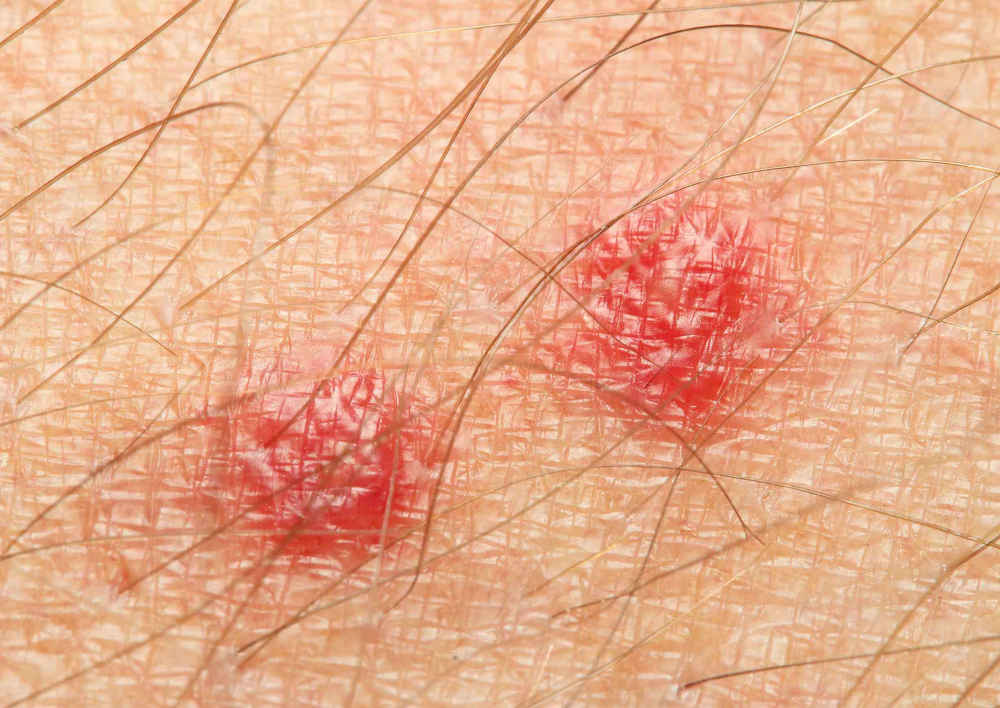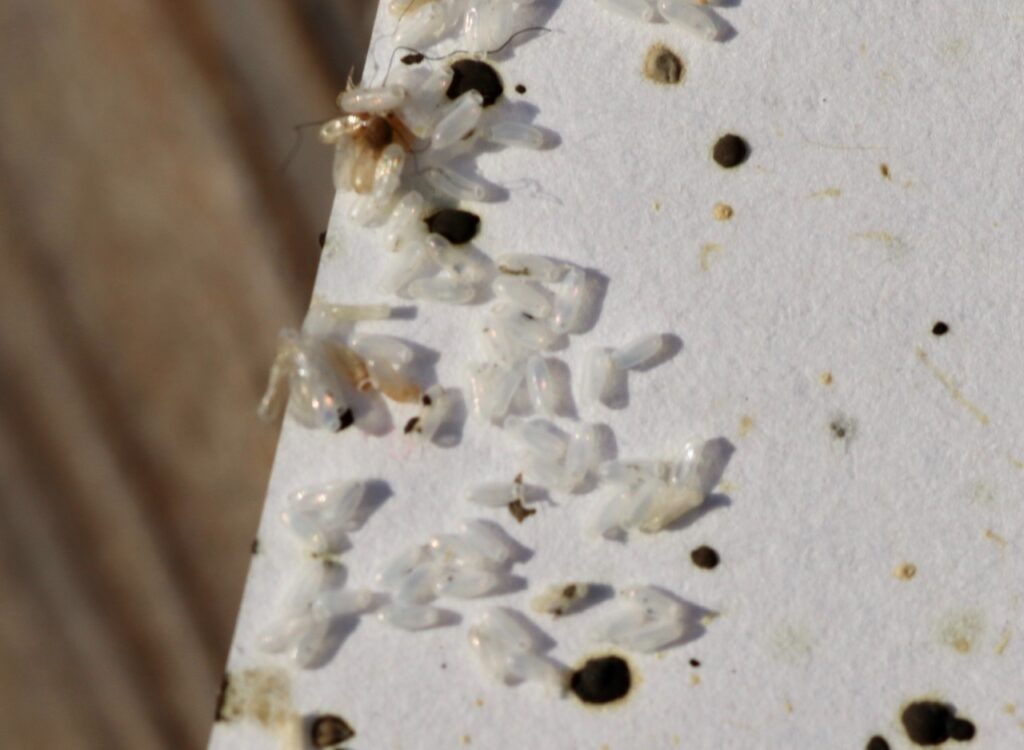Generally regarded as one of the most difficult pests to manage, bed bugs are a nuisance that you never want to find in your home or business. These tiny bugs are masters at hiding, easily latching onto people, luggage, furniture, or other belongings and spreading anywhere that humans settle. Places with high amounts of traffic, such as hotels, dormitories, and even businesses and households can be bed bug hotspots. Because of their small size, inclination toward hiding within mattresses and furniture, and rapid rate of reproduction, controlling a bed bug infestation can be very difficult.
When it comes to bed bugs, having the right knowledge and being proactive can go a long way toward preventing a full outbreak from occurring. The following article will delve into all the details you need to know about identifying a bed bug infestation and how to prevent them from coming back in the future.
How can I tell if I have bed bugs?
While it can be difficult to find bed bugs when they have invaded your space, they leave behind many telltale signs that can help you identify their presence. When changing your bedding, staying away from home, or cleaning your room or office, always be on the lookout for physical signs of bed bugs, including:
● Stains: Bed bugs leave behind rusty, reddish blood stains on bedding or furniture when crushed
● Excrement: If you find dark spots the size of a pen tip on your bedding, it may be bed bug feces. These dark marks on the fabric may bleed onto the fabric like a magic marker would, smearing after being washed.
● Eggshells: Bed bugs lay tiny eggs, which are typically about 1 mm in length. Along with eggs and eggshells, you may also find pale yellow skins that were shed by the bed bug nymphs as they grew larger.
● Bites: Asides from finding a live bed bug, bites are the most obvious sign that you have an outbreak on your hands. These red bumps very commonly cause itching and usually appear in small clusters on your skin.
For more information on the common signs of a bed bug infestation, you can read through Burns Pest Elimination’s pest library entry on bed bugs.
How to Check for Bed Bugs
When checking your space for bed bugs, start with areas that commonly attract this pest. Bed bugs are attracted to warmth and want to live near sources of food, making mattresses and beds their preferred habitat. However, couches, recliners, and even office chairs are popular hiding spots as well, since they feed on blood in places where humans sit or lay idle for long periods of time.
Since bed bugs are only about the width of a credit card, they can squeeze into very small hiding spots. Around your bed, check near the piping, seams, and tags of the mattress and box spring, as well as inside cracks in the bed frame and headboard. You should also check along window and door frames, wall joints, electrical outlets, broken or loose wallpaper, and cracks along the floor as well, as these tiny spaces can be ideal hiding spots for bed bugs if your bed or furniture is inaccessible.
Bed bugs are nocturnal insects, so if you are struggling to find physical evidence of their presence, you may be able to draw them out if you keep the room dark and use a flashlight to look around. If you find any of the common signs that bed bugs have taken residence in your space, contact a pest control company immediately for a consultation.
How do I know if I have been bitten by bed bugs?

Bed bug bites are typically found on parts of the body that are commonly exposed to the pest when you sleep, such as the hands, neck, face, shoulders, legs, and arms. These bites are normally small, red-colored, raised areas that may become inflamed, itchy, or blistered when scratched at. They are often grouped together in a small cluster, usually in a line or zigzag pattern.
People react to bed bug bites in many different ways. Most of the time, bed bug bites are easy to mistake as those coming from other insects, such as mosquitos or chiggers. However, some people may also get rashes that look similar to eczema or fungal infections, break out in hives, or not have any reaction at all. Bed bug bite reactions do not always present themselves right away and may take a few days to begin causing visible symptoms.
How can I prevent and protect myself from bed bugs?
The best way to prevent a bed bug outbreak is to stay knowledgeable on the common signs that they are present and remain vigilant on routinely checking for them. Make checking your mattress for bed bugs a regular part of your cleaning regimen, particularly whenever you are changing your bed linens. Investing in mattress and box spring covers for each bed can also help eliminate bed bug hiding spots, and make inspecting for them easier. Purchasing bed bug traps to be placed under the legs of your bed or furniture can catch the pest before they are able to climb up and begin infesting.
It is good practice to inspect the area you are staying in when sleeping in hotels or with friends and family. You should check the mattress, headboard, side tables, and dresser for bed bugs before utilizing them, and consider bringing a travel bed bug spray to apply to your luggage. Failure to do so could lead to you and your belongings becoming unexpected carriers for the pest, bringing them back to your home or business.
Thoroughly inspect and clean used or discarded furniture before bringing it inside your home. Old pieces of furniture that have been kept outside on the curb or in a store with many other secondhand items have a higher chance of carrying bed bugs than when you buy these things brand-new.
How much time is needed to detect a bed bug infestation?

Since bed bugs can hide inside of mattresses, mattress toppers, and tiny cracks in walls, detecting an infestation until it has fully broken out is very difficult. Bed bugs spread remarkably quickly, thanks to their ability to lay many eggs throughout the span of a day. A female bed bug lays approximately 2-5 eggs a day, which begin hatching 7-10 days later. Bed bugs are typically not solitary pests, so a concerningly large number of females are likely laying eggs in one spot at the same time.
Bed bug nymphs reach adulthood in 5-7 weeks with consistent feeding. Once they reach this stage, they will begin to reproduce as long as they have regular access to blood. Because of this, it can only take a month or two to have a full-blown bed bug infestation in your home or business. The sooner you find the initial bed bugs, the better your chances are of stopping the outbreak, as the eggs and nymphs are difficult to detect because of their tiny size.
Are there any permanent solutions for bed bugs?
While there may not be any “permanent” solutions for bed bugs, practicing preventative care can go a long way toward keeping your home or business pest-free. Always be on the lookout for the first signs of bed bug infestation, such as staining on your bedding and furniture or bites, and monitor or fill in cracks in your walls where they can be hiding. Be consistent with your cleaning, and routinely check your bedding for indicators of bed bugs. When you are spending the night away from home, check over your sleeping quarters for bed bugs so they don’t make the trip home with you.
Without proper training, spotting and identifying bed bugs is difficult, which is why it is always handy to have the expert eyes of a professional pest control company on your side. For those living in Arizona and Las Vegas, Burns Pest Elimination has an experienced team of pest technicians and K-9 bed bug inspectors ready to clear out those pests as quickly and discreetly as possible. Burns Pest will work with you to create a personalized bed bug elimination plan that works with your unique situation and budget, and we won’t quit until your pest problem is solved.
Getting regular checkups and treatments from pest control experts is the best way to avoid bed bugs, and Burns Pest Elimination is always happy to help when you need it most. If you see any signs of a bed bug infestation in your home, call our emergency line for fast bed bug treatment, send us a message, or request your free pest control quote today!
More From Burns Pest Elimination


